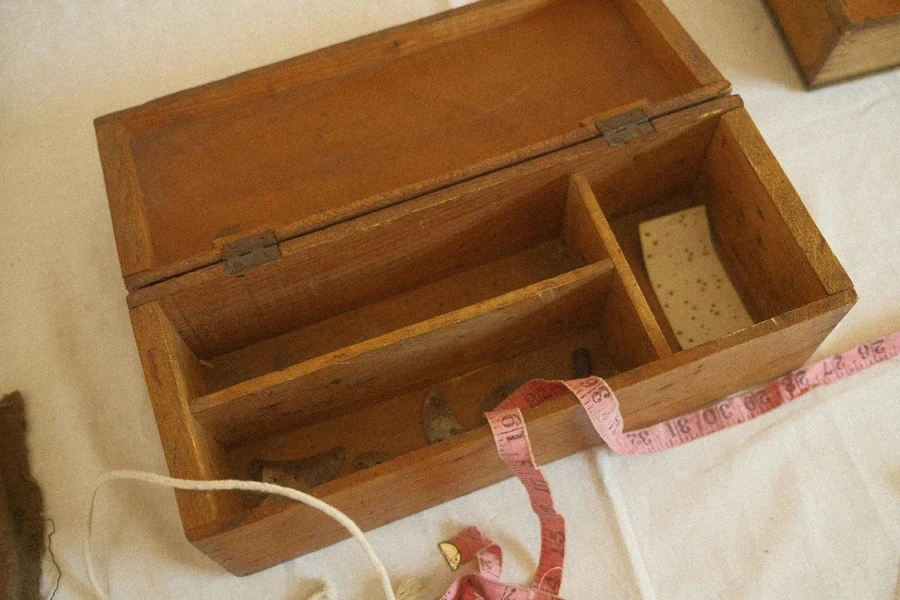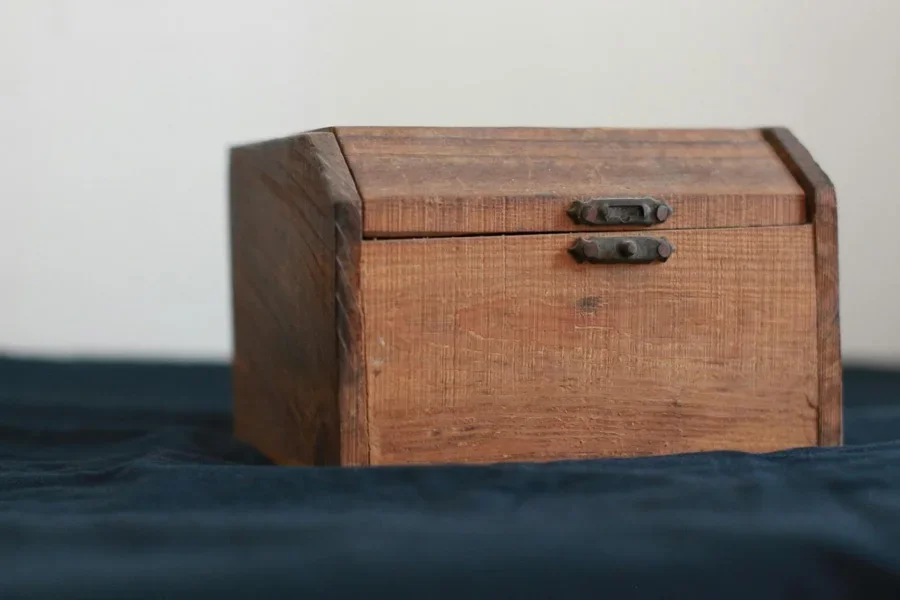Tissue boxes have become a must-have in homes and workplaces for keeping things clean and germ-free. Besides being handy, the looks and quality of the materials used in making them are becoming more important for businesses wanting to make a good impression and cater to consumers who want both style and functionality. As people are more conscious about cleanliness standards and being eco-friendly, the tissue box industry has developed new ideas and better products. Knowing what’s happening in this market is key for professionals deciding what to buy. This article delves into the developments in tissue box options for business requirements and highlights key features to consider when buying these products.
Table of Contents
● Market overview: The tissue box industry’s growth and potential
● The main types of tissue boxes and their unique features
● Key factors to consider when choosing tissue boxes
● Conclusion
Market overview: The tissue box industry’s growth and potential

Market scale and growth rate
Due to rising demand in homes and businesses, the tissue box market is on a trajectory. The tissue paper industry is set to expand from USD 90.99 billion in 2024 to USD 154.54 billion by 2032, with a growth rate of 6.85%. This uptrend is primarily driven by a growing emphasis on cleanliness and health measures in industries like hospitality and healthcare and the expanding usage in developing markets such as the Asia Pacific and North America.
Key market segments
The market has two categories—one for household use and the other for commercial purposes. The commercial sector holds most of the market share primarily because it is extensively used in offices, restaurants, eateries, and medical facilities. Tissue boxes are common in these places as they help uphold cleanliness and professionalism. In addition, the demand for household usage is increasing as consumers become more aware of the importance of maintaining hygiene at home. In 2023, as reported by Fortune Business Insights, the Asia Pacific region was a large contributor to the market, with a share of 32.35% primarily influenced by the expansion of the hospitality and tourism sectors.
Consumer trends and innovations
The move towards high-end and eco-friendly tissue boxes is a significant trend today. Companies are emphasizing using resources like recycled paper and bamboo to attract eco-consumers. Additionally, advancements such as antimicrobial coatings and hands-free dispensers are becoming more popular in busy public areas such as hospitals and airports. Chic styles and top-notch materials like metal and wood accents are also gaining importance as businesses strive to elevate their brand reputation with premium products.
The main types of tissue boxes and their unique features

Box dispensers and wall-mounted options
Box dispensers are commonly seen in homes and small office environments because they are simple to use and convenient for tissue access. These holders are made to fit tissue boxes, and they are usually placed in reachable spots, like countertops or desks. They typically fit tissue boxes that measure 200mm x 110mm x 50mm snugly to ensure the tissues can be dispensed smoothly. The materials used vary from plastics to stylish metallic finishes based on the desired look of the area. In settings like restrooms in office buildings and hospitals, you often see wall-mounted dispensers made of materials such as stainless steel or sturdy plastic to endure constant use in busy locations. The wall-mounted dispensers are usually spacious and can hold plenty of tissue refills to reduce the need for maintenance. They also have locks to keep the tissues secure and prevent meddling.
Countertop and tower tissue boxes
Countertop tissue holders are made for ease and mobility. It can accommodate tissue boxes around 145mm x 120mm x 60mm in size. They work well in places such as desks or coffee tables where you need tissues handy but don’t want them to occupy much space. Tower tissue boxes offer a vertical option with designs like elongated rectangles typically used. These vertical towers are usually 250mm tall, great for saving horizontal space, and perfect for smaller areas like nightstands or bathroom countertops. Their tower design adds a unique touch and makes pulling out tissues from a higher position convenient and easily accessible in cramped spots.
Automatic and hands-free dispensers

Automatic tissue dispensers have gained popularity in places where hygiene is crucial. They utilize sensors to detect movement and provide tissues without touching them physically. They are run by batteries or connected directly to electricity and commonly incorporate a system that controls the quantity of tissue dispensed per use to minimize waste by dispensing between 150mm and 200mm at a time. Hands-free dispensers come with settings for tweaking sensor sensitivity and delay time for a smoother user interaction experience. Numerous models come equipped with various properties to prevent tampering. They are typically encased in materials like ABS plastic or stainless steel for durability and easy maintenance. These units are specifically crafted for settings where they can accommodate large tissue rolls or packs to minimize the need for frequent refills.
Materials and design options
Materials used for tissue box dispensers come with various functions and appearances from which to choose. Cardboard tissue boxes are the simplest and most commonly seen in homes due to their cost-effectiveness and disposable nature. They are usually for one-time use and don’t protect the tissues inside completely. On the other hand, wooden dispensers made from materials like bamboo offer a greener and longer-lasting option. Bamboo dispensers, for example, are often treated with water-resistant coatings to extend their lifespan in humid environments like bathrooms. Metal dispensers, particularly those made from stainless steel or brushed aluminum, provide superior durability and are commonly used in commercial spaces for their sleek appearance and long-lasting performance. Metal dispensers can also feature corrosion-resistant coatings, essential in environments exposed to moisture, such as kitchens or restrooms.
Key factors to consider when choosing tissue boxes

Capacity and ease of refilling
Capacity is key when choosing tissue boxes or dispensers for places like offices and hotels that get lots of traffic. In settings like offices or hotels where many people use tissues regularly, larger dispensers are a great choice because they can have a lot of tissue refills at once, which means less time spent restocking and maintaining them regularly. On the other hand, in spaces like homes, you’ll typically find smaller tissue boxes. They’re designed for lighter use and are easier to refill when needed. Opting for either top-loading or side-loading mechanisms can greatly improve the convenience of refilling items efficiently. Selecting the capacity based on the intended usage environment is crucial for refills to maintain a supply without any unnecessary disruptions.
Durability and material quality
The choice of material for a tissue box or dispenser is crucial in deciding how long it will last and what maintenance it will require. In places like offices or public areas where the usage’s high and constant handling is expected, sturdy materials like steel or high-quality plastic are ideal to withstand wear and tear and exposure to elements such as humidity. For use at home, wwooden tissue boxes are popular for their durability and visual appeal; however, it’s important to consider the type of wood used and any protective coatings like water finish to prevent damage, especially in damp places like bathrooms. Alternatively, plastic dispensers offer a lightweight and cost-effective solution; however, their durability may be shorter when compared to metal or wood options. In high-traffic locations, opting for robust materials ensures prolonged usage and reduces the necessity for frequent replacements.
Design and functionality
Finding the balance between design and functionality is crucial when picking tissue boxes or dispensers for places like offices or luxury hotels where looks are important. Opting for designs that enhance the decor while ensuring access to tissues is essential. For instance, small and sleek designs work well in areas like desks or side tables, whereas taller tower-shaped dispensers or wall-mounted options help save space in crowded settings. Adding features, like transparent windows to check tissue levels, is useful in places like stores, where running out of tissues can be a hassle. These design choices ensure that the tissue dispenser works well and improves the feel of the room.
Hygiene and maintenance requirements
Maintaining cleanliness is crucial in places such as hospitals, eateries, or public bathrooms where tissue boxes are handled frequently. Tissue holders coated with antimicrobial substances aid in decreasing the transmission of bacteria and germs and provide a good level of defense in communal areas. Additionally, surfaces that are easy to clean and parts that can be removed make upkeep easier and help keep the dispenser hygienic. Sleek surfaces that don’t accumulate dust or dirt are preferred as they need less cleaning. Sealing designs or dust covers can also enhance the protection of tissues from contamination and improve the product’s hygiene for extended use in business and home environments.
Conclusion

Choosing tissue boxes for business purposes involves a grasp of current market trends and product variations, as well as essential characteristics like size capacity, material durability, design, and versatility. The increasing popularity of advancements and cleanliness-oriented options such as antimicrobial coatings means that professional purchasers need to consider not only visual appeal but also practicality factors to effectively cater to their specific needs. Organizations can make informed choices for the intended environment setting that elevates usability and customer satisfaction by prioritizing longevity and upkeep convenience while ensuring suitability.





 Afrikaans
Afrikaans አማርኛ
አማርኛ العربية
العربية বাংলা
বাংলা Nederlands
Nederlands English
English Français
Français Deutsch
Deutsch हिन्दी
हिन्दी Bahasa Indonesia
Bahasa Indonesia Italiano
Italiano 日本語
日本語 한국어
한국어 Bahasa Melayu
Bahasa Melayu മലയാളം
മലയാളം پښتو
پښتو فارسی
فارسی Polski
Polski Português
Português Русский
Русский Español
Español Kiswahili
Kiswahili ไทย
ไทย Türkçe
Türkçe اردو
اردو Tiếng Việt
Tiếng Việt isiXhosa
isiXhosa Zulu
Zulu